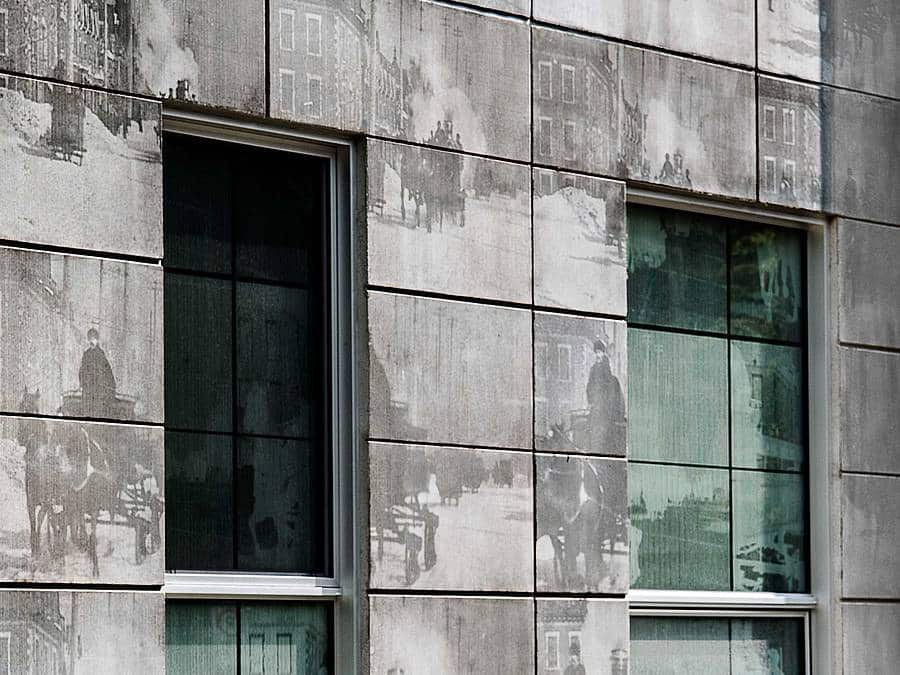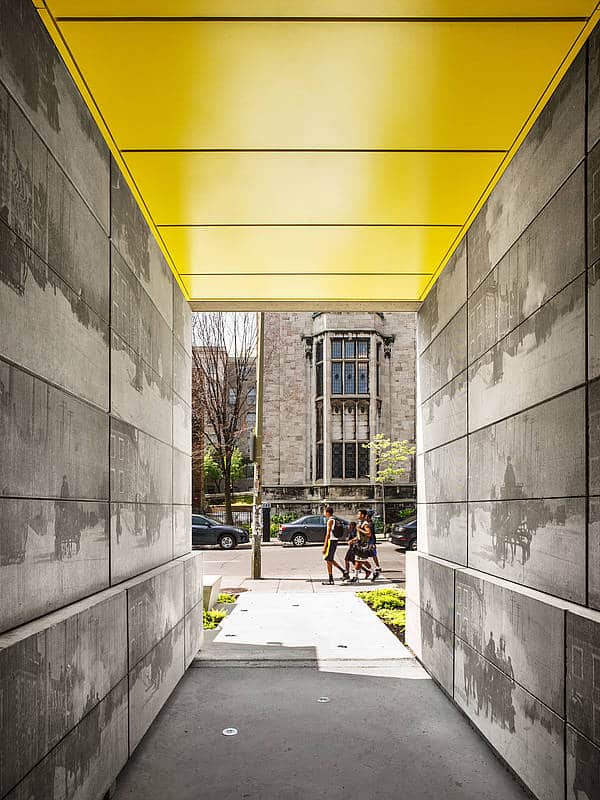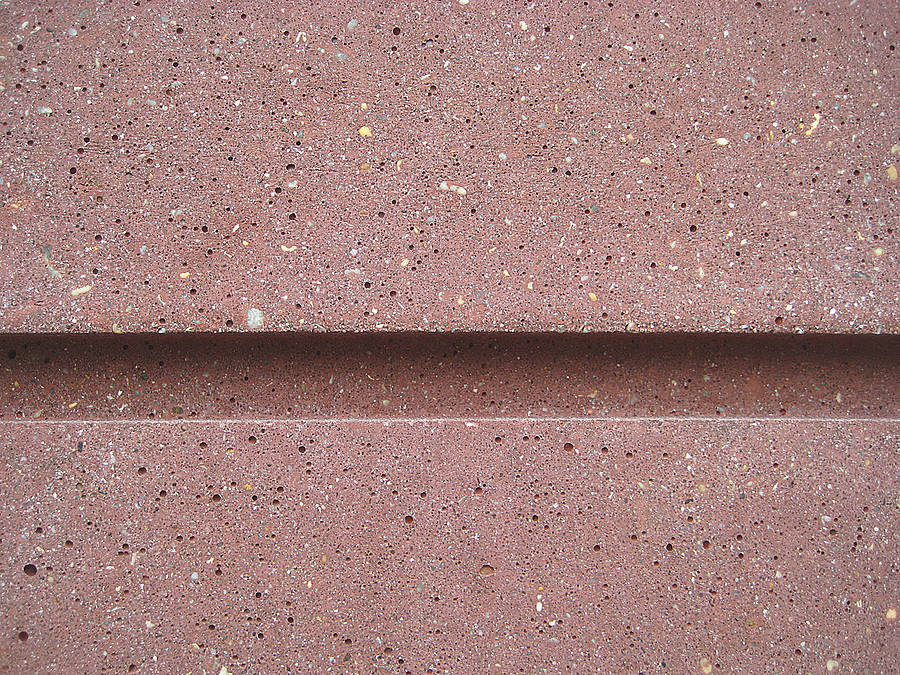
Stories
History cast into concrete
In Canada, architects of a student residence have succeeded in combining the past and modern age in one very special way. During their researches of the history of the building ground the planners did find film footage showing Montreal at the beginning of the 20th century. A historical treasure which was worthy of perpetuation on the buildings walls using photo engraved formliners.

It was a cold winter’s day in 1901 when the cameraman William Paley set up his gear in front of the fire station in Montreal and recorded the firefighters moving out for an emergency. This two minute black and white film, which was taken by a Thomas Edison camera during snowfall, presents the fire fighters sitting in horse-drawn vehicles passing by the camera. This film, ‘Montreal Fire Department On The Runners’ is one of the first motion picture recordings of Montreal. Today, it is stored in the Library of Congress in Washington, D.C. More than 100 years after its emergence, architects located in Montreal, rediscovered the film and brought it back to life.

The designer of the architectural office, Kanva, have worked on several drafts for a building complex with 30 student apartments. The complex is to be constructed on an estate that has not been used since a fire at the beginning of the 20th century. As the architects like to design their drafts with an interdisciplinary approach, they exchanged ideas with artists and other creative minds. During the planning process of the residential building next to the McGill University, they came across that footage of the old fire station. Out of their fascination, they decided to integrate these pictures into the project.
“The historical context has become the determining inspiration of the urban renewal project, which is what led us to the discovery of an innovative concrete processing technique – the application of engraved concrete components by which the building is enabled to tell a story.” This is the explanation by the architects for their decision in favor of the photo engraving technique.
The Edison Residence is not only a memorial in the inventor’s honor with respect to its name but also regarding its visual appearance. The building’s outer wall features passages of the movie engraved into the concrete surface. The effect of the photo-engraved picture is enabled through the deployment of RECKLI’s elastomeric formliners embossing the motif onto the concrete surface.

The architects selected a series of frames which result in a short sequence of the movie being shown. To manufacture the formliners for the photo-engraving process, the drafts were scanned and converted into data files consisting of 256 shades of grey. These gray scales are then used to generate a processing data file which is fed into the CNC milling machine. During the next step, the motif is milled into the panel material. These panels serve as positive models for the RECKLI formliners which are made by pouring elastomers over the positives. Once the material is set, the formliners can be used for further processing either at precast concrete plants or directly at the construction site by placing them into the formwork before concreting. The final result is a unique blend of smooth and rough patterns of varying degrees embossed into the concrete creating a relief-like surface. After the concrete’s drying process has finished, the formliners can be easily peeled off due to their elastomeric characteristics. The formliners are known to be extremely rugged, which is why it is possible to use them multiple times. This feature makes a process as complex as photoengraving economical.
The final result is a surface that appears surprisingly soft and unobtrusive on a material that usually conveys a feeling of coldness and dominance. The appearance of the surface varies depending on the angle with which the building is approached. From a distance, the different shades of grey create the impression of a weather-beaten concrete surface. Seen from up close, the pictures become sharp and converge to short sequences of the movie. In this way, the Edison Residence’s outer wall opens up a window to the past for the city’s residents and visitors.

